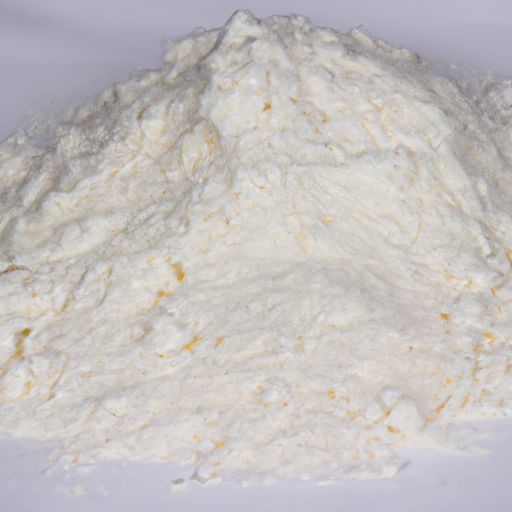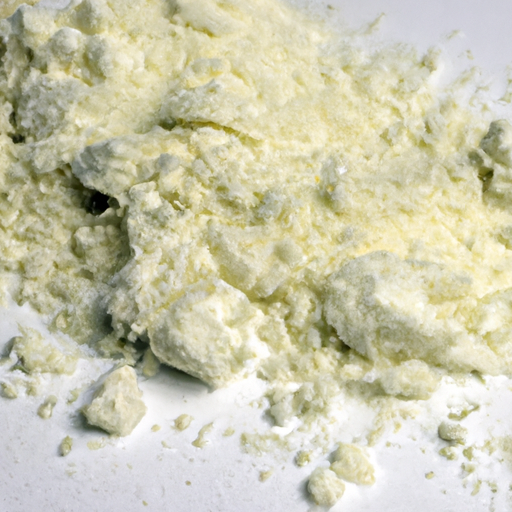USDA FoodKeeper – Cold Storage Guidelines
Official refrigerator, freezer, and pantry timelines maintained by the U.S. Department of Agriculture.
Visit USDA FoodKeeperCassava flour, a gluten-free powerhouse derived from the humble cassava root, has gained popularity for its versatility in baking and cooking. With a solid shelf life of up to a year when stored in a cool, dry pantry, it remains safe to use for months beyond its expiration date, making it a smart addition to your kitchen staples. Just keep an eye on your supply, and you’ll be ready to whip up delicious dishes at a moment’s notice!
Get our 16-page guide with exact timelines for 70+ foods. Save €1,500+/year by knowing what's actually safe to eat.
"Cassava flour should be stored in a cool, dry place at temperatures below 85°F to prevent spoilage and maintain quality. Properly stored, cassava flour can maintain its quality for up to one year." - USDA


Pantry
Room temperature
Store in an airtight container
365 days
Mold, bad odor, infestation
Use in gluten-free baking
Almond flour, rice flour
Cassava flour does not have a specific expiration date but rather a 'best by' or 'use by' date on the packaging. The expiration date indicates the period during which the product is expected to be at its peak quality in terms of taste, texture, and nutritional value. Beyond this date, the quality of the flour may start to deteriorate, leading to changes in taste, texture, and possibly nutrient loss. However, as long as cassava flour is stored properly in a cool, dry place away from moisture and heat, it can often be used beyond the expiration date with minimal quality loss.
To check if cassava flour has gone bad, look for any signs of discoloration, mold growth, or unusual dark spots on the flour. Smell the flour for any off-putting or sour odors. Additionally, feel the texture of the flour - if it feels clumpy, moist, or sticky, it is best to discard it.
Cassava flour, like many other flours, can be at risk for contamination with pathogens such as Salmonella or E. coli if not handled or stored properly. It is important to ensure that cassava flour is stored in a clean, dry container to prevent moisture buildup, which can lead to the growth of mold and bacteria. Additionally, always check for any signs of spoilage such as off odor, discoloration, or unusual texture before using cassava flour in recipes to avoid foodborne illness risks.
To optimize the storage of cassava flour and extend its shelf life, it is recommended to transfer the flour to an airtight container or resealable bag after opening the original packaging. Store the container in a cool, dry place away from direct sunlight, heat sources, and moisture. Avoid storing cassava flour near strong-smelling foods as it can easily absorb odors. Additionally, for long-term storage, you can freeze cassava flour to maintain its freshness for an extended period. Before using frozen cassava flour, allow it to come to room temperature to prevent clumping.
Cassava flour, also known as manioc or yuca flour, is a gluten-free alternative to traditional wheat flour, making it a popular choice for individuals with gluten sensitivities or celiac disease. In many cultures, cassava flour plays a significant role in traditional dishes and culinary practices. For example, in Brazilian cuisine, cassava flour is used to make traditional dishes like farofa, a toasted cassava flour mixture often served as a side dish. Additionally, cassava flour is a staple ingredient in African, Caribbean, and Asian cuisines, where it is used in various recipes ranging from flatbreads to desserts.
It is safe to store Cassava Flour next to other baking ingredients as long as they are in sealed containers to prevent cross-contamination. Avoid storing it near strong-smelling items as Cassava Flour can absorb odors.
Cooking Cassava Flour does not affect its expiration date. However, once prepared into a dish, the expiration timeline shifts, and it should be consumed within a reasonable timeframe or refrigerated if not consumed immediately.
The type of container can impact the shelf life of Cassava Flour. It is best stored in airtight containers to prevent moisture absorption and pest contamination, which can extend its shelf life and maintain quality.
Once opened, Cassava Flour can be safely consumed up to the expiry date if stored properly in a sealed container in a cool, dry place. After the expiry date, it is generally safe to consume for up to 180 days if there are no signs of spoilage.
Freezing Cassava Flour is not recommended as it can alter the texture and moisture content. When thawed, it may become clumpy or lose its original consistency. It's best to store Cassava Flour in a cool, dry pantry to maintain its quality.
While shelf life can vary slightly between brands due to processing methods and packaging, most Cassava Flour brands have a shelf life of around 365 days when stored correctly. Always check the expiration date on the package for specific guidance.
Cassava Flour generally lasts longer in winter due to cooler temperatures and lower humidity levels, which help preserve its quality. In contrast, higher temperatures and humidity in summer can accelerate spoilage. Store it in a cool, dry place away from direct sunlight for optimal shelf life.
When transporting Cassava Flour for an extended period, ensure it is stored in a sturdy, airtight container to prevent crushing and exposure to moisture. Keep it away from direct sunlight and extreme temperatures. Consider placing it in a cooler bag or insulated container for added protection.
Stop guessing about expiration dates. Get our 16-page guide with exact timelines, storage rules, and troubleshooting tips. Save €1,500+/year.
Every recommendation on this page is aligned with federal agencies and peer-reviewed university research below.
Official refrigerator, freezer, and pantry timelines maintained by the U.S. Department of Agriculture.
Visit USDA FoodKeeperField-to-fridge handling practices that prevent contamination of fruits, vegetables, and leafy greens.
Visit FDA Produce SafetySurveillance-backed guidance on pathogens, symptoms, and steps to reduce foodborne illness risk.
Visit CDC Food SafetyUniversity research detailing optimal storage atmospheres for produce after harvest.
Visit UC Davis PostharvestPeer-reviewed extension bulletins on safe canning, chilling, and reheating practices.
Visit Penn State ExtensionNeed deeper reading? Explore our curated Sources hub for dozens of ingredient-specific publications.
Scan your food directly and get instant safety info using our AI-powered camera feature.
We have recipes that can help you safely use cassava flour past its expiration date!
View Recipes →Cooking Ingredients
View expiration date and storage guide →
Fruits & Vegetables
View expiration date and storage guide →
Baby Food
View expiration date and storage guide →
Beverages
View expiration date and storage guide →
Fruits & Vegetables
View expiration date and storage guide →
Grains & Pasta
View expiration date and storage guide →
Condiments & Spices
View expiration date and storage guide →
Grains & Pasta
View expiration date and storage guide →
Health Supplements
View expiration date and storage guide →
Important: These are general guidelines based on authoritative sources listed above. Always use your best judgment and when in doubt, throw it out. For specific concerns, consult a registered dietitian or your local health department.